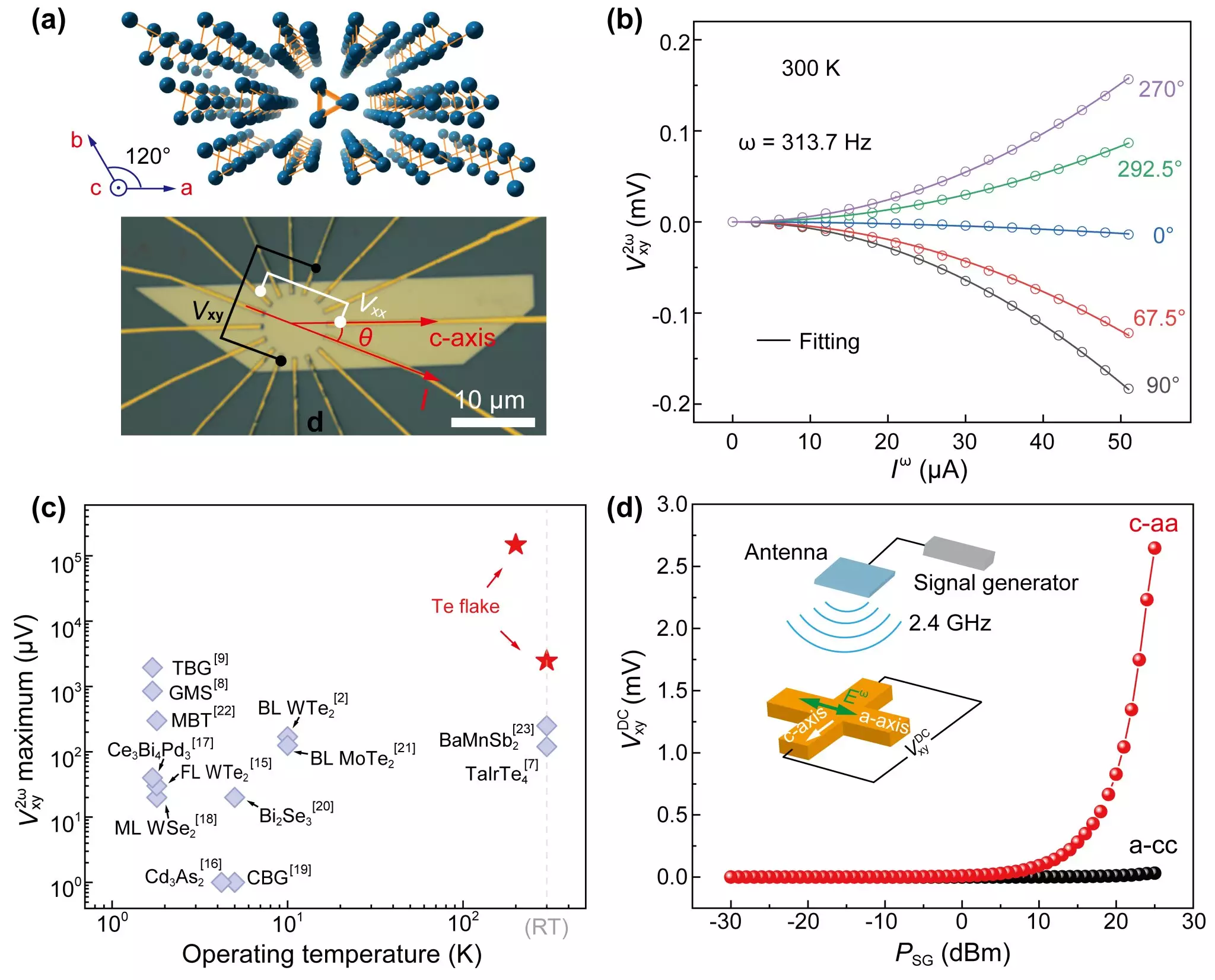Recent advancements in semiconductor research have unveiled the nonlinear Hall effect (NLHE) in elemental tellurium (Te) at room temperature, as reported in the prestigious journal, Nature Communications. This discovery is noteworthy given the historical challenges associated with harnessing NLHE for practical applications. Typically, NLHE serves as a second-order response to alternating currents, producing second-harmonic signals without necessitating an external magnetic field. Despite its promising potential in enhancing frequency-doubling and rectification technologies, past investigations have often been thwarted by limited voltage outputs and restrictive operational temperatures.
The focus of this groundbreaking research is on tellurium, a narrow-bandgap semiconductor known for its unique one-dimensional helical chain structures. These structures inherently disrupt inversion symmetry, rendering Te a prime candidate for exploring NLHE phenomena. Previous applications had primarily concentrated on Dirac semimetal BaMnSb2 and Weyl semimetal TaIrTe4, which, while demonstrating NLHE, produced modest voltage outputs with little flexibility for tuning. In contrast, the research team sought a new avenue by concentrating on the exceptional properties of tellurium.
In their experimental work, the researchers were able to demonstrate a remarkable NLHE in thin flakes of tellurium at room temperature. These findings are particularly compelling, as the maximum second-harmonic output reached 2.8 mV at 300 K, vastly exceeding previous benchmarks. Such a voltage output not only marks a substantial leap forward but also signifies a level of tunability via external gate voltages that had not been achieved previously in NLHE research. The scientists attributed the efficacy of Te’s NLHE to extrinsic scattering processes and the surface symmetry breaking characteristic of thin flake structures. Understanding these mechanisms paves the way for further advancements in nonlinear transport mechanisms.
Taking their research a step further, the team innovatively replaced traditional AC currents with radiofrequency signals, leading to the successful implementation of wireless rectification in tellurium thin flakes. This approach yielded a stable rectified voltage output across a wide frequency spectrum from 0.3 to 4.5 GHz. What sets this method apart from classical rectification techniques—commonly reliant on p-n junctions or metal-semiconductor junctions—is its broadband responsiveness under zero bias. This property positions tellurium as an attractive candidate for the development of efficient energy harvesting systems and wireless charging devices.
The investigation led by Prof. Zeng Changgan and Associate Researcher Li Lin from the University of Science and Technology of China signifies the advent of new possibilities in nonlinear transport research. This work not only enriches our understanding of the intricate dynamics at play within solid materials but also heralds a future rich with potential for the design of advanced electronic devices. As researchers continue to delve into the capabilities of tellurium, we may witness a transformative shift in how energy harvesting and wireless rectification systems are conceived and developed, marking a notable progression in semiconductor technology.

